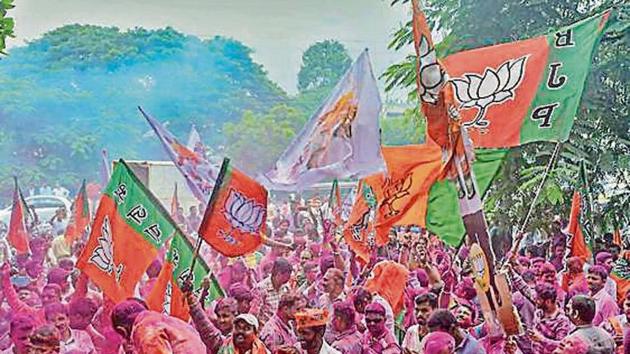Results a wake-up call for high commands of both BJP, Congress
There is a larger message in these two election results. While Indian voters continue to repose their faith in Narendra Modi, they are not so forgiving vis-à-vis a new generation of chief ministers.
In May 2014, Narendra Modi led the Bharatiya Janata Party (BJP) to a majority on its own in the Lok Sabha. This was a feat last achieved by the Congress in 1984. Haryana and Maharashtra assemblies went to the polls a few months after that verdict. The BJP fought these elections not just as an anti-incumbency force but also a disruptive one. Both in Haryana and Maharashtra, the BJP contested the 2014 assembly elections on its own. The bet paid off, and the BJP formed a majority government in Haryana while it replaced the Shiv Sena as the senior partner in a post-poll coalition in Maharashtra.

The BJP’s complete dominance in the 2019 Lok Sabha elections — it won all 10 seats in Haryana and 23 out of the 41 won by the BJP-Shiv Sena alliance in Maharashtra; the Shiv Sena won 18 – created an impression that it would not only win comfortably in Haryana but that it would manage a majority on its own even in Maharashtra.
Yesterday’s assembly election results have nullified such ideas. The BJP has fallen short of a majority in Haryana. The performance, when compared with assembly constituency (AC)-wise break-up from the 2019 Lok Sabha polls, is telling. From having won 79 out of the 90 ACs in the 2019 Lok Sabha, the BJP has gone down to just 40 ACs in the assembly.
Even in Maharashtra, the BJP has suffered a loss of 17 ACs compared to its 2014 assembly tally, while the Shiv Sena has managed to retain its 2014 tally of 63 ACs. So, the BJP has not gained much, at least in terms of seats, by allying with the Shiv Sena.
See Chart 1A and 1B: Maharashtra and Haryana 2014 assembly and Lok Sabha and 2019 assembly and Lok Sabha


There is a larger message in these two election results. While Indian voters continue to repose their faith in Narendra Modi, they are not so forgiving vis-à-vis a new generation of chief ministers such as Manohar Lal Khattar and Devendra Fadnavis, who only came into prominence under the Narendra Modi-Amit Shah leadership of the BJP.
To be sure, the BJP appeared to be vulnerable in Gujarat and even lost important assembly elections such as Madhya Pradesh, Chhattisgarh and Rajasthan before the 2019 Lok Sabha elections.
The BJP has done better in states where it was not in power. Even though the BJP could not get past the majority mark in Karnataka in 2018, it did emerge the single largest party (and eventually, in 2019, formed the government). In states where it is an emerging political force such as West Bengal, it is still hoping to benefit from anti-incumbency. The short point is, Modi need not bother about anti-incumbency, but BJP’s chief ministers would do well to guard against it.
This brings us to the question of the Congress and other opposition parties. In their case, perhaps the reverse holds true. The top leadership of the Congress does not seem to be able to inspire confidence among voters that they can provide a better option than Modi at the Centre. But their state leaders, even though they might belong to the old guard, are capable of staging an upset or at least giving the BJP a scare in assembly elections — much like Bhupinder Singh Hooda in Haryana has done.
Even Sharad Pwar of the Nationalist Congress Party (NCP), a former Congressman and now a Congress ally, has held his own in Maharashtra.
The Maharashtra and Haryana elections have important lessons for the top leadership of both the BJP and the Congress. Narendra Modi and Amit Shah will do well to realise that their chief ministers cannot get complacent because of the party’s victories in Lok Sbaha elections, as the voter has started making a clear distinction between voting for a prime minister and chief minister.
For the Congress, political developments of the past year, from the party winning Rajasthan, Madhya Pradesh and Chhattisgarh in December 2018 to losing the Lok Sabha elections in these states very badly shortly after, and performing much better in Haryana and Maharashtra now (than the Lok Sabha elections would have suggested) show that the voter is more willing to repose faith in provincial leaders of the Congress than its national ones.
It will be interesting to see how the top leadership of both the Congress and the BJP adopts to this federal rupture — different political preferences at the centre and state — in India’s polity in the days to come.






